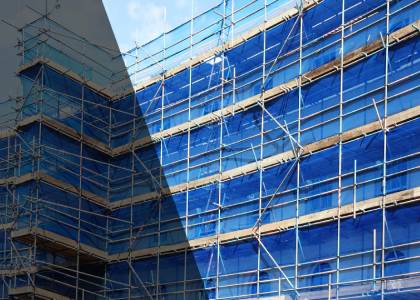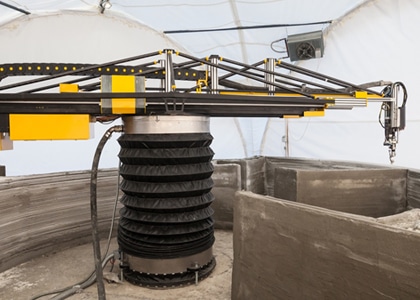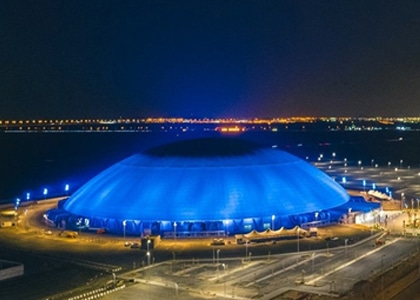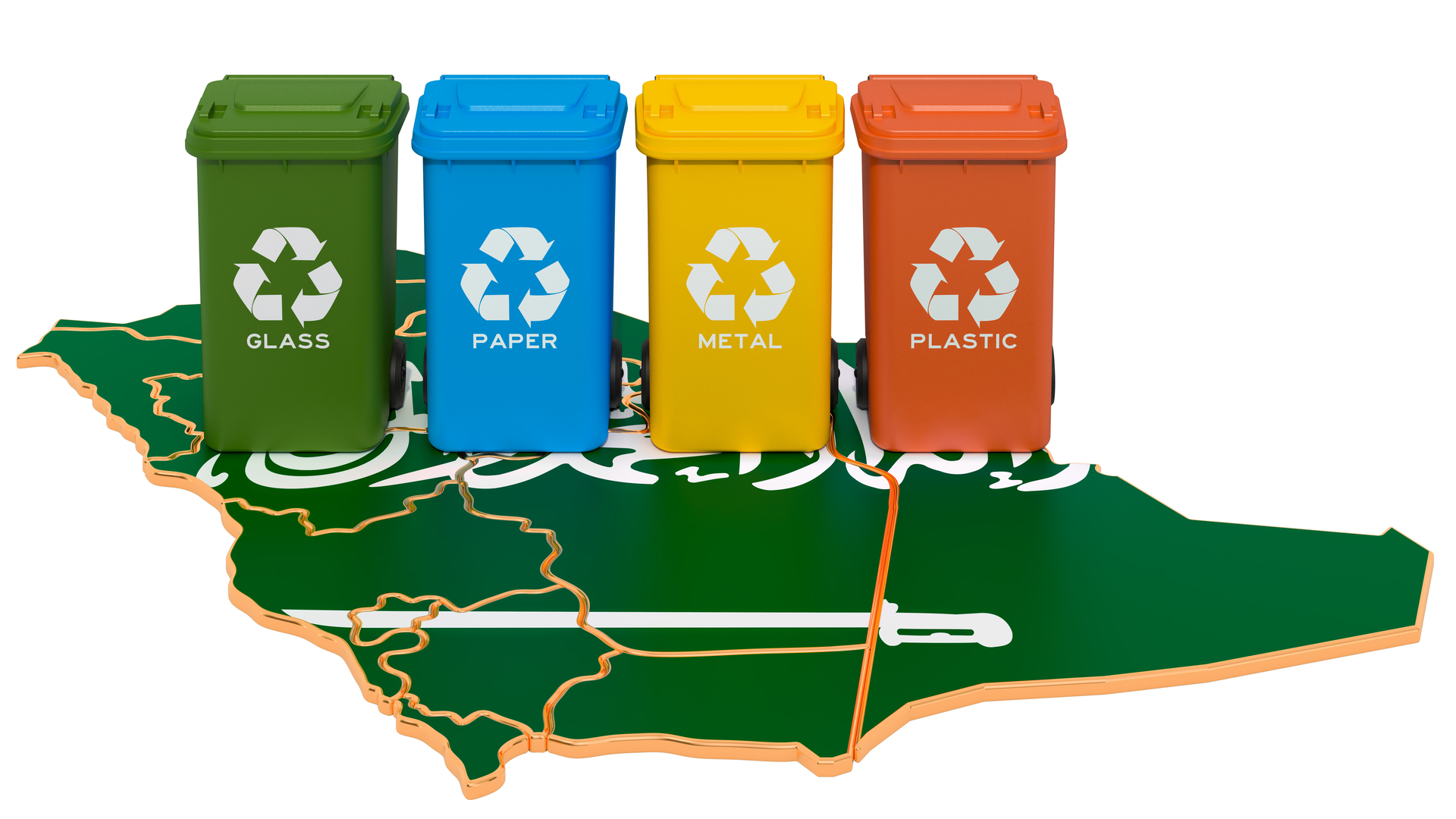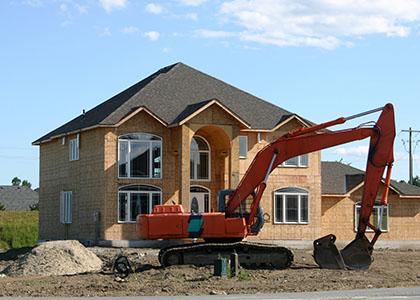Home / Blog / 4 ways to keep your workers safe and your projects on track
SUMMARY
Poor safety performance has always been a significant issue of concern in the construction industry. Whilst the Saudi construction sector is large and expanding with immense structure and manpower, it is still prone to a high number of accidents.
Although various strategies have been applied to counter the hazards and risks faced by employees in construction, more needs to be done to implement them. In this regard, technology inclusion, building awareness amid the workforce, and taking proper precautionary measures through training, show potential for improvement. This includes building a work safety culture, increasing real-time monitoring through drones and live monitors on-site, and investing in personnel training, all with the potential to greatly reduce error and emergency notification time. Increasing response speed through improved site planning and real-time hazard management can also help mitigate risks.
Investing in your workforce by supporting them with incentives has a direct correlation to worker confidence and motivation. With better practices and digital implements to support your team, you will not only notice reduced accidents but greater productivity, too. It pays to remember that a higher incidence of accident-free sites can help your company meet its targets faster and more efficiently.
This article offers suggestions on how to increase safety in the construction workplace so you can keep your projects on track.
INDEX
- PRACTICE ‘SAFE-SITE’ PROTOCOLS
- EMPLOY BEST PRACTICES FOR WORKER SAFETY
- IMPROVE WORKER PERFORMANCE AND CONFIDENCE
- INCORPORATE INNOVATIVE TECHNOLOGY-BASED PROCESSES
- BENEFITS OF INVESTING IN WORKER SAFETY
4 WAYS TO KEEP YOUR WORKERS SAFE AND YOUR PROJECTS ON TRACK
Ensuring Optimal Safety Standards During Construction
Globally, the construction industry is known for its alarmingly high hazard rates. In the Middle East, whilst Saudi Arabia is seen as the ‘biggest builder’ with the highest number of construction projects under development, sadly, the country also records the greatest number of construction-related accidents and fatalities. In recent years, Saudi Arabia has reported approximately 70,000 accidents yearly. These are alarming numbers and have manifold ramifications.
Even with all the investment and effort being put into mega projects in the country, they are continuous delays. The implementation of structured, worker-safety policies and an adequate safety-driven culture is one of the ways construction companies like yours can keep your workforce safe and accident-free. Simultaneously, these measures will also enable you to keep your projects on track.
Employing best practices in construction safety can help Saudi meet its wider objectives for socioeconomic development, whilst enhancing its global reputation.

- PRACTICE ‘SAFE-SITE’ PROTOCOLS
- Plan ahead: As an industry that is growing exponentially in the Kingdom, extensive planning at the start of a project can help ensure safety on job sites. Project managers and field representatives need to designate work to experience laborers. Only qualified professionals should be using specialized tools and equipment, and everyone on site should be made aware of potential hazards. Additionally, zoning areas, installing catch platforms, nets, and other safety measures can keep the site safer for everybody. Appropriate scaffolding needs to be installed, holes in the structure need to be cordoned off, and other potential fall hazards should be planned for before construction begins.
- Manage risks: When working on an industrial site, encourage frequent safety meetings and stringent safety protocols. Allow for breaks and rest. Especially during the summer months be mindful of heat-related illnesses and exhaustion. Make sure workers have adequate access to water, encourage them to take regular breaks, and train them to monitor signs for heat exertion.
- Staff and schedule smarter: Another overlooked but pressing safety issue is worker qualification. An industry-wide talent shortage can make it difficult to appropriately staff job sites, leading companies to over-schedule jobs or hire unqualified personnel. By planning and supplementing your workforce through reliable subletting on projects, you not only keep the construction schedule on track but also mitigate risks from rushed work and staff shortages. Hiring inexperienced workers can cause serious injuries that delay work and lower morale on site. It pays to keep in mind that accidents cost the Saudi Arabian construction industry nearly $500 million a year through missed timelines.
- Incorporate technology: New technologies across the construction industry allow you to address onsite safety challenges and experience immediate cost savings. Technology is proving that it is worth the investment to help bridge time and distance constraints and improve efficiency and safety in the long run. The growth of digitalization processes is also enabling real-time remote decision-making. Unmanned drones are already in use and offer a convenient way to conduct site inspections, observations, and safety audits. Managers can use smartphones, tablets, and project management software to share data instantaneously from remote worksites using something as simple as a cell phone or tablet. These programs and devices give real-time access and construction information and help mitigate emergencies, whilst keeping work on track.

- EMPLOY BEST PRACTICES FOR WORKER SAFETY
Across projects, it is important to follow best practices on construction safety, as these are the first steps to protecting workers, the environment, and the general public from heavy and dangerous equipment, pollutant materials, and accidents.
The most effective way to meet construction targets is by adhering to the following worker safety best practices:
- Wear the correct protective gear: Wearing the correct personal protective equipment (PPE) can mean the difference between a minor injury, a long-term injury, or even a fatality. It’s important to provide your employees with the appropriate PPE relative to the type of work being carried out. This can include helmets, ear protection, safety goggles, knee pads, and hi-vis jackets. If they become worn or unfit for purpose, they need to be replaced immediately.
- Construct and maintain secure scaffolding: When erecting scaffolding, there should be no shortcuts or improvisations. It should be built on stable ground with solid footing to eradicate any risk of collapse. You need to ensure maintenance and repair of any damaged part or inconsistencies in structure and construction. Additionally, you need to ensure that the employees using the scaffolding have an adequate level of scaffolding safety training.
- Undertake health and safety trainings: The first line of defense for protecting against accidents that put human life at risk is hiring trained experts. Trained experts set the foundation for on-the-job safety training and ensure that everyone onsite follows construction safety protocols. Additionally, construction workers operating in high and medium risk environments need to be fully competent and aware of the risks associated with their actions – especially when working at heights, with machinery or in confined spaces.
- Clearly mark area with signage: Construction sites are full of potential dangers, not just for workers but for the public too. It’s important to highlight any hazards with signs and posters, warning everyone nearby to take pre-cautions. Signs pointing out dangers such as falling objects, turning vehicles or a presence of gas and chemicals are a cost-effective way of reducing accidents.
- Employ technology: In today’s technological world, there are multiple applications and digital platforms that allow for more efficient on-site communication. With life-saving features that deliver increased work monitoring, they can help eliminate wasted time in emergencies. These digital applications are an excellent way to monitor your staff’s safety, share risk assessments and manage communication for projects.
- Conduct inspections: Construction workers rely on their tools to work efficiently and get jobs done. These need to be regularly inspected to ensure that they are working safely and efficiently. If their tools are unsafe or broken, there is a high risk of serious injury. It is both the responsibility of the worker and the employer to highlight issues with defective equipment.
- Efficient communication: Communication is a major factor in keeping employees and a construction site safe. Staff needs to communicate with each other about potential risks and need to be aware of hazards.

- IMPROVE WORKER PERFORMANCE AND CONFIDENCE
Securing a site to make it safe for work reduces not only accidents but also raises worker confidence. In fact, studies show that implementing a safety culture within your organization is one of the most effective strategies for making your construction business more profitable. Repeat accidents on-site can take a significant toll on staff morale and affect the quality of work being done, as well as, add medical expenses to your projects.
- Worker protection: Looking after the occupational health and safety of staff means that they are mentally and physically in a position to carry out work. For this, they need reasonably timed job shifts with regular breaks – especially during the hot months when afternoon temperatures soar. They also need to be guaranteed adequate recreational time as scheduled breaks, weekly time off, and annual leave.
- Adhere to labor laws: Work on a construction site is both technical and labor-intensive, so construction safety practices are indispensable. Ensuring that you are adhering to labor laws goes a long way in delivering on construction safety practices. Tired staff leads to work errors, inefficiency, and potentially dangerous mishaps. Specified work timings help to hold both a company and its staff accountable.
- Compliance: As a construction company, it’s important you adhere to compliance processes not only to ensure the safety of your workers but also to protect your business from accident-related litigation and insurance claims.
- Health insurance plans: Construction companies like yourself are well-advised to provide workers with a good health insurance plan and encourage them to use it. Most of the labor workforce employed in Saudi is from third-world countries where health systems are not well established. Health insurance coverage gives them the confidence that they will not only be looked after should any accidents occur, but also that they will be supported by better healthcare than in their home countries. Thus, they remain motivated to work hard and stay employed.
- Support from management: Working as a builder in the construction industry also involves pressure to meet project deadlines, work with heavy equipment, and sometimes, exposure to hazardous materials, whilst ensuring the safety of personnel and property. For construction workers to confidently meet this responsibility they need to feel supported by management and the company.
These measures lead to good mental health among staff, fewer worries, and increased morale, allowing for greater focus and alertness whilst on the job. As a company owner, supporting and entrusting your employees with privileges not only leads to better worker productivity, it also boosts your company’s workforce retention. Reliable and experienced workers deliver on quality and help you build a positive reputation in the industry and with clients.
- INCORPORATE INNOVATIVE TECHNOLOGY-BASED PROCESSES
The increased use of digital applications across construction has immense potential in improving worker safety and in helping you meet targets.

- Use of drones: With the input of data into a construction safety checking application, accurate reports can be produced for submission to compliance regulation bodies. Such data can be collected using drone technology, reducing the possibility of human error.
Mobile reporting is another form of digitized construction safety. It reduces error or emergency notification time and increases response speed. Mobile reporting allows for the collection and recording of real-time data, with the ability to relay important construction safety messages with greater ease and speed. - Motion sensors: Applications for motion sensors with proximity warnings can alert workers of falling objects. Similarly, geographic applications can assist with conducting feasibility studies that consider construction worker safety protocols.
- Training and workshops: It’s always a challenge to learn a new skill. Training workers on new systems, procedures and transitioning these into daily operations takes time, energy, and resources. To ensure safety and productivity, it’s important to meet these challenges. However, as the use of artificial intelligence can provide better oversight, it alerts you to potential breaches quicker.
It is a good idea, therefore, to incorporate digital technology focused on construction safety into your company. Digitalization processes have the potential to improve complete site planning and real-time hazard management so that construction companies can better implement safety practices.
BENEFITS OF INVESTING IN WORKER SAFETY
In addition to the life-saving benefits of ensuring worker safety, the right health and safety compliance regulations contribute to smoother and more efficient downstream operations. Without them, you can be faced with repeat unexpected costs for machinery repair, legal fees, staff medical expenses from injury, or fines for failing to meet regulations.
- Protection of human and material assets
Investing in the right safety protocols helps prevent dangerous accidents before they happen. Including health and safety best practices in day-to-day operations is key to protecting company assets, staff, and is integral to smart financial management.

- Cost-benefit analysis
Cost-benefit studies have repeatedly shown that construction safety is not an unnecessary expense. Best practices in construction safety and a clean record also amount to increased motivation and regularly low insurance rates. You additionally, benefit from improved profit margins and industry reputation.
For more information on on-site safety and construction best practices get in touch with SSF. We are a leading manufacturer of scaffolding in Saudi Arabia and provide safe and durable structural systems for construction, renovation, and maintenance work.

